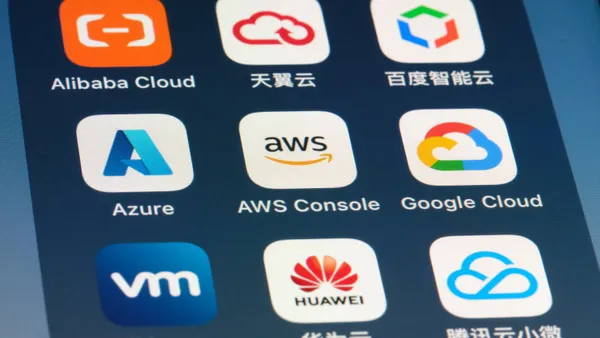Dive Brief:
-
More than half of IT leaders are reporting budget increases, even at companies where leadership prioritizes "efficiency and saving money" in technology projects, according to the 2019 Harvey Nash/KPMG survey of more than 3,600 CIOs and technology leaders around the world. Investment in technology is becoming a cross-industry priority, driven by budget increases in transformation, automation and cybersecurity.
-
IT control is shifting, and more companies are moving toward business-managed IT; more than 20% of respondents say 11-25% of tech budget is managed outside of the IT department, according to the report. When compared against competitors, those companies with business-managed IT perform "significantly better" in areas like customer experience and the time it takes to bring new products to market.
-
There is a downside to shifting budget control. More than 40% of companies with business-managed IT don't involve the technology department in the decision making process, according to the report. Those without IT input are twice as likely "to have multiple security areas exposed," and 9% more likely to have faced a major cyberattack within the last two years.
Dive Insight:
Enterprises of all shapes and sizes are coming to terms with the increase in technology. Digital companies are driving industry disruption and fueling process change, setting the standard for what consumers expect.
Nothing less than seamless technology will do.
As the Harvey Nash/KPMG report mentioned, even the most conservative organizations are investing in IT. No more nickel and diming.
IT has had to learn to relinquish control. But lines of business were making decisions outside the oversight of IT. Shadow IT used to be a scourge, and now it is accepted — and in some cases welcomed.
It's a shifting of priorities. Now, departments are standardizing where it makes sense, leaving lines of business to determine their own tools.
IT solutions company Insight follows a similar model. Core enterprise applications, such as ERP, web and collaborations, all fall under IT's direction. Business-specific solutions from finance or marketing, for example, operate under those department's leadership. IT comes in to consult and ensure integrations are seamless.
IT still maintains its influence, but its control changes, easing the technology burden across the enterprise. Departments can innovate upon the set standards put in place by the technology core of business.














